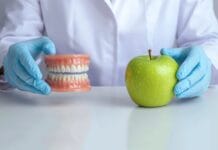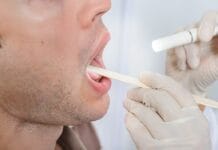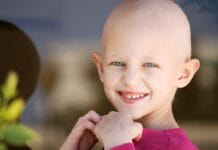Sleep disorders, particularly sleep-disordered breathing (SDB), are significant concerns affecting children, with obstructive sleep apnea being a common type. SBD can lead to decreased sleep quality. Symptoms of decreased sleep quality in children can be snoring, nocturia, irritability, learning difficulties, behavioral disorders such as attention deficit hyperactivity disorder, and daytime sleepiness.
Various factors, such as enlarged adenoids and tonsils, obesity, and dentofacial morphology, can contribute to SDB. Moreover, certain craniofacial changes, syndromes, and neuromuscular diseases can increase the risk of SDB in children.1
A recent study investigated whether there is an association between severe malocclusion and symptoms of SDB in children. The authors suggest that children with severe malocclusion may be at a higher risk of experiencing daytime sleepiness and sleep disturbances. The study aimed to investigate this potential association and the relationship between daytime sleepiness, sleep quality, and craniofacial morphology in children with severe malocclusion compared to those with neutral occlusion.1
The Study
This study investigated daytime sleepiness and sleep patterns in children with severe malocclusion before orthodontic treatment, comparing them to children with neutral occlusion. It also explored potential associations between daytime sleepiness, sleep quality, and craniofacial morphology, which hasn’t been extensively studied before. The study included children aged 9 to 14, as this age group commonly receives orthodontic treatment. Both groups had sufficient sample sizes for statistical analysis.1
Daytime sleepiness and sleep were assessed using the Berlin Questionnaire (BQ) and Epworth Sleepiness Scale (ESS). Although these tools are not designed to diagnose sleep-disordered breathing, they are considered acceptable for subjective assessment of sleep quantity and quality, which was the primary focus of this study. The BQ is a validated questionnaire commonly used in children. The results were adjusted for age, gender, and BMI, as these factors are known to influence sleep patterns in children.1
The Results
The children with malocclusion were found to have significantly higher daytime sleepiness compared to those with neutral occlusion, particularly in the vertical plane for both deep bite and open bite. They also tended to experience extreme tiredness during the day more frequently. While abnormal daytime sleepiness isn’t a disease itself, it can be a symptom of sleep disorders like sleep-disordered breathing (SDB). Studies suggest a link between SDB and dentofacial morphology, which could explain the higher daytime sleepiness observed in children with severe malocclusion.1
Although there was no significant difference in the number of sleeping hours between the two groups, the number of hours slept was negatively associated with age and BMI score. Obesity is closely associated with SDB, though its role in children is still not completely understood.1
Regarding craniofacial morphology, only maxillary inclination showed a significant association with daytime sleepiness. Surprisingly, a smaller maxillary inclination was associated with higher daytime sleepiness, contrary to expectations based on previous studies.1
Previous research has indicated a positive link between symptoms of SDB and mandibular retrognathia, characterized by distal molar occlusion and/or increased horizontal maxillary overjet. However, conflicting findings exist, with some studies failing to find such a connection.1
Additionally, certain studies have observed a higher occurrence of crossbite and reduced palatal width in children with SDB, while others have found no association, aligning with the current study’s results. This disparity underscores the complex nature of SDB’s etiology, influenced by anatomical, physiological, and neuromuscular factors, alongside age, gender, and BMI.1
Nonetheless, this study’s findings, adjusted for age, gender, and BMI, emphasize the need for interdisciplinary collaboration between medical and orthodontic specialists in diagnosing, preventing, and treating children at risk for SDB.1
Conclusion
The findings revealed a notable prevalence of daytime sleepiness in children with severe malocclusion compared to those with neutral occlusion, suggesting a potential association between daytime sleepiness and craniofacial morphology.1
These results hold promise for enhancing interdisciplinary collaboration between medical professionals, dental professionals, and orthodontic specialists in identifying, preventing, and treating severe malocclusion in children who may be susceptible to sleep-disordered breathing.1
Before you leave, check out the Today’s RDH self-study CE courses. All courses are peer-reviewed and non-sponsored to focus solely on high-quality education. Click here now.
Listen to the Today’s RDH Dental Hygiene Podcast Below:
Reference
1. Bruun, S.N., Hansen, C., Sonnesen, L. Sleepiness in Children With Severe Malocclusion Compared With in Children With Neutral Occlusion. Am J Orthod Dentofacial Orthop. 2024; 165(5): 593-601. https://www.ajodo.org/article/S0889-5406(24)00019-2/fulltext










